Rated 5.0 out of 5
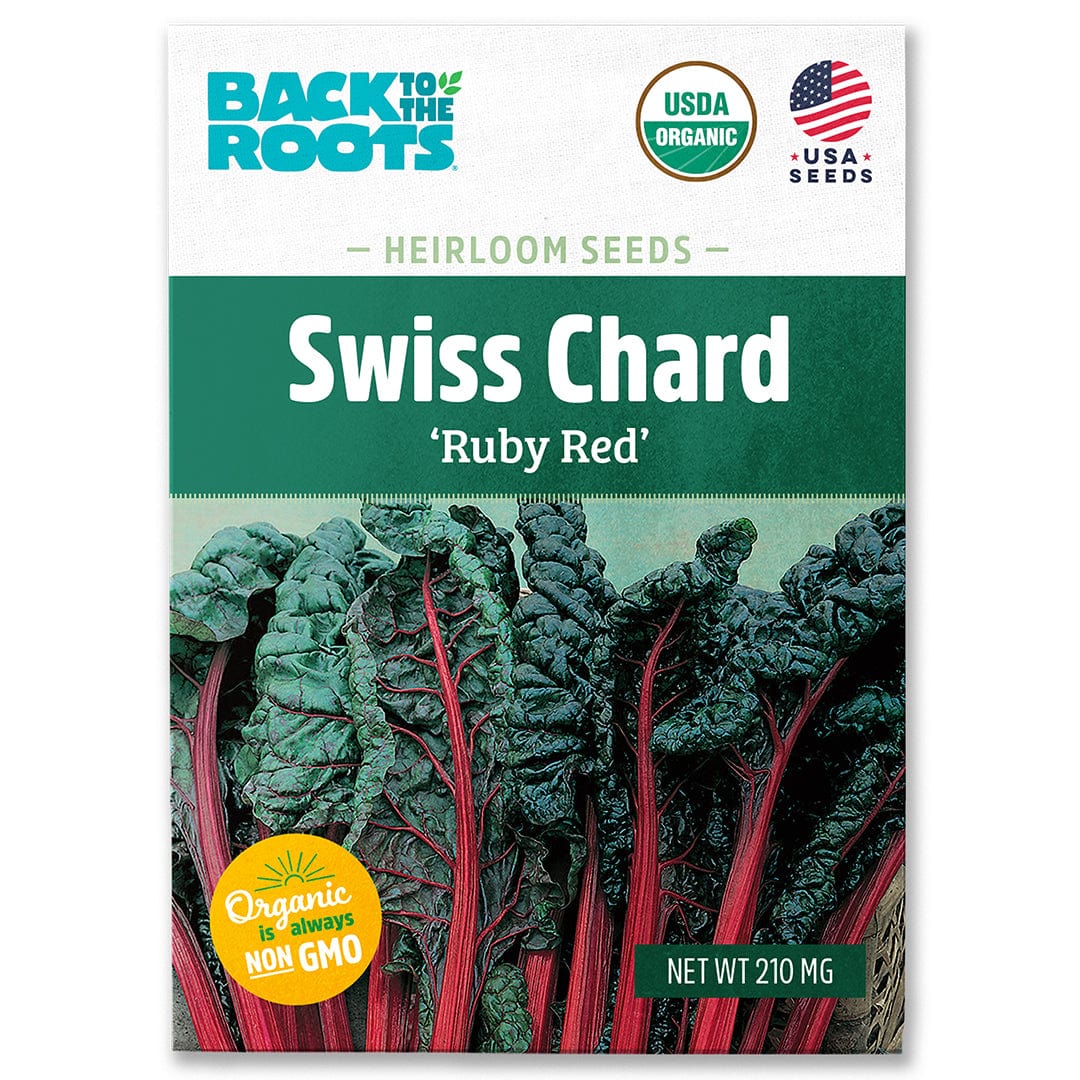
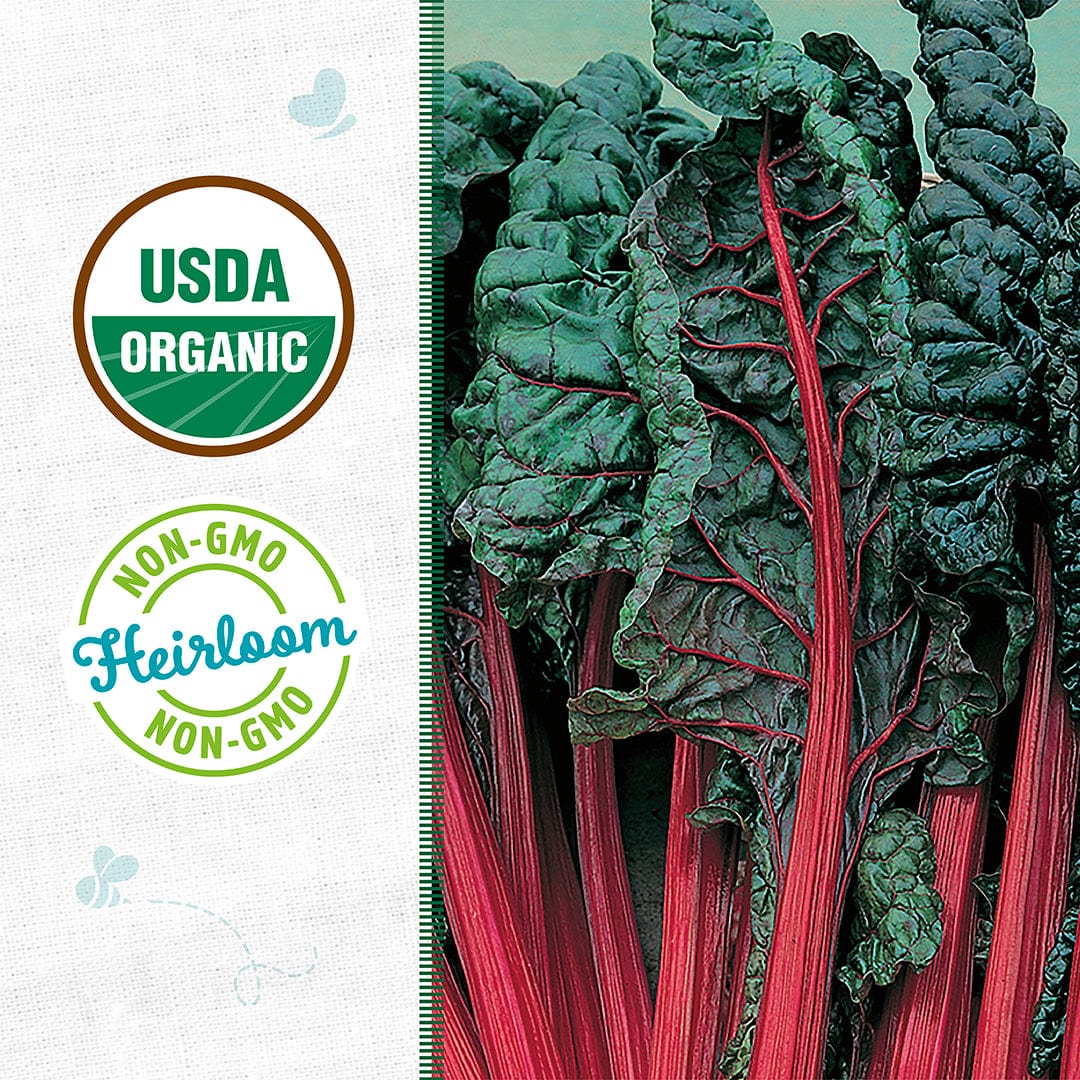
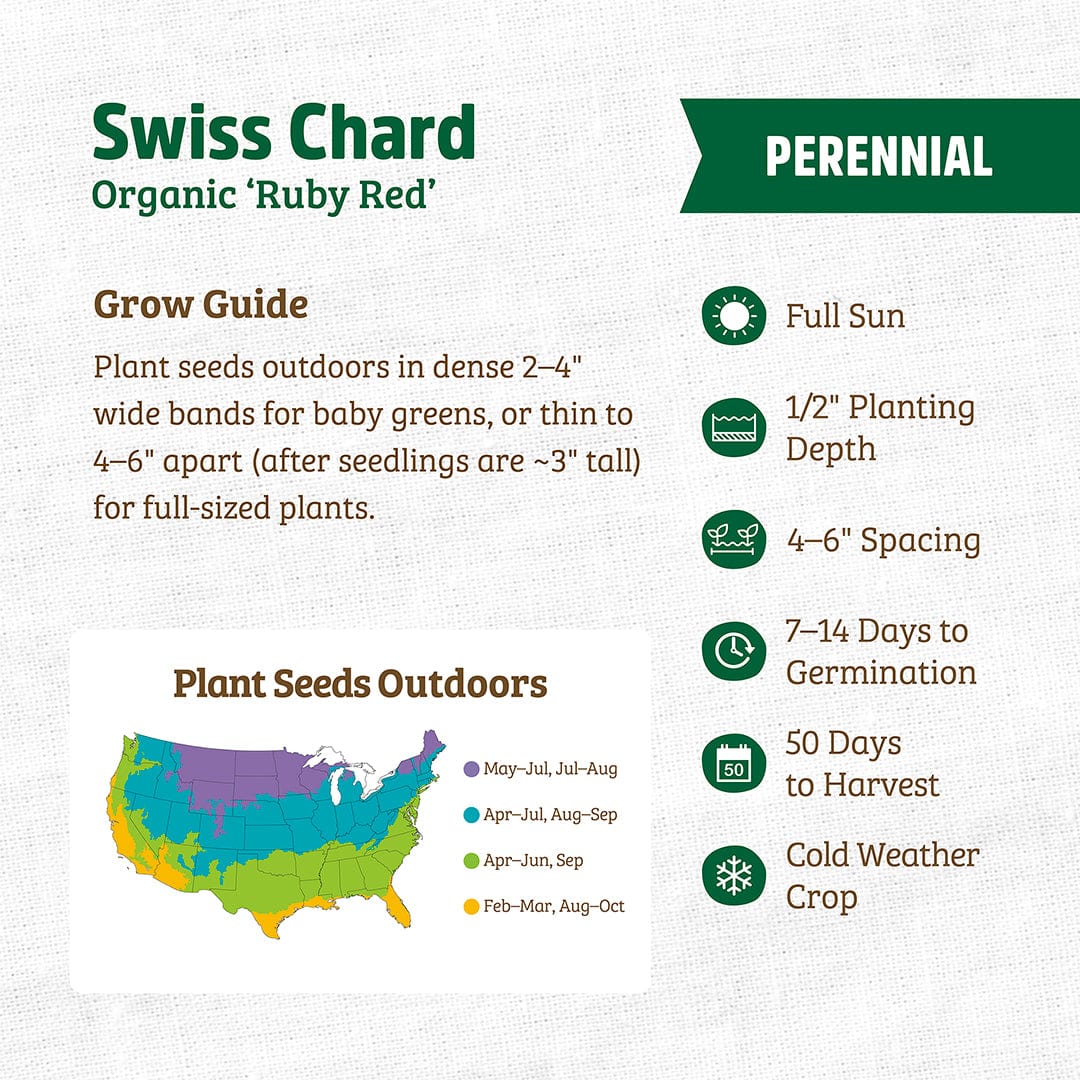
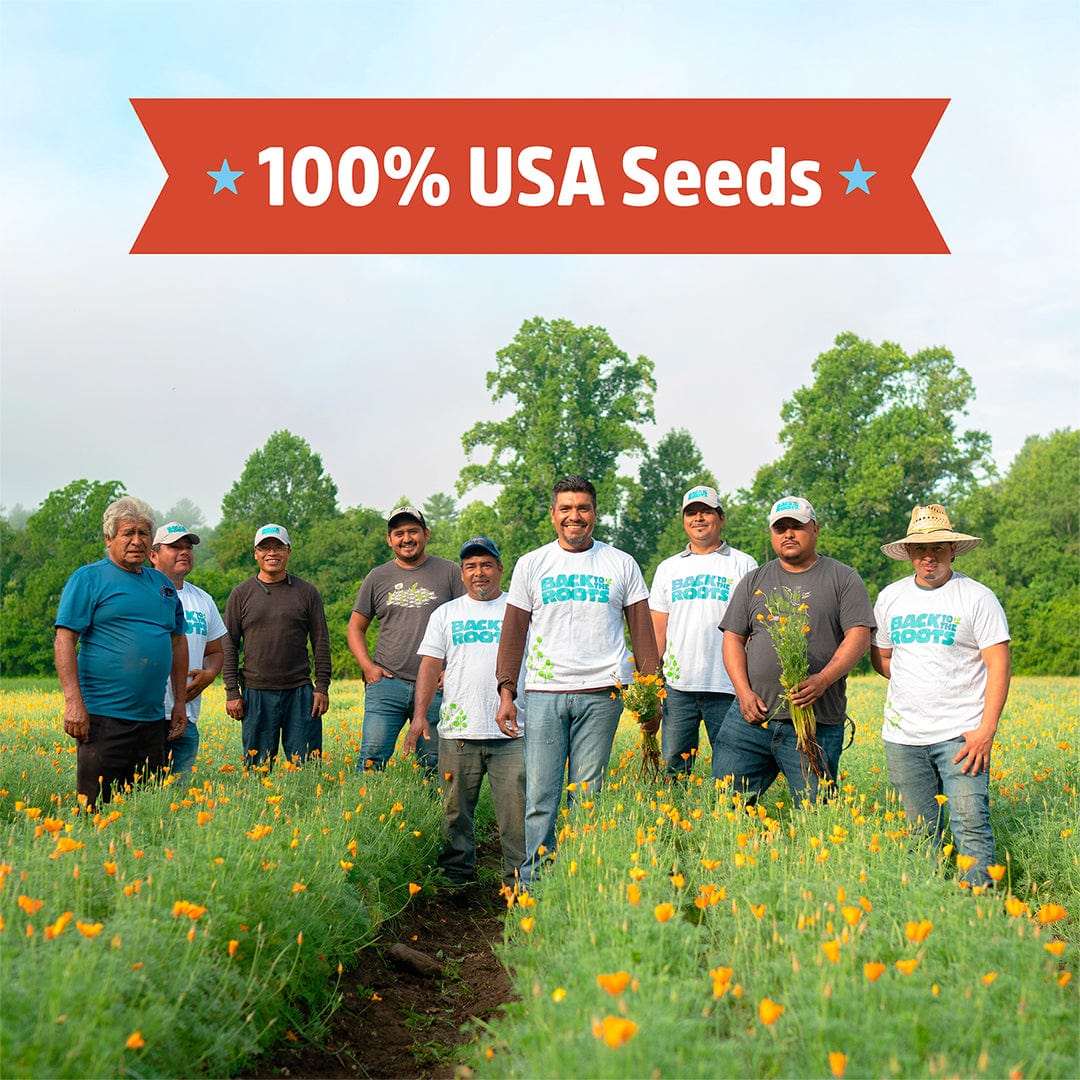

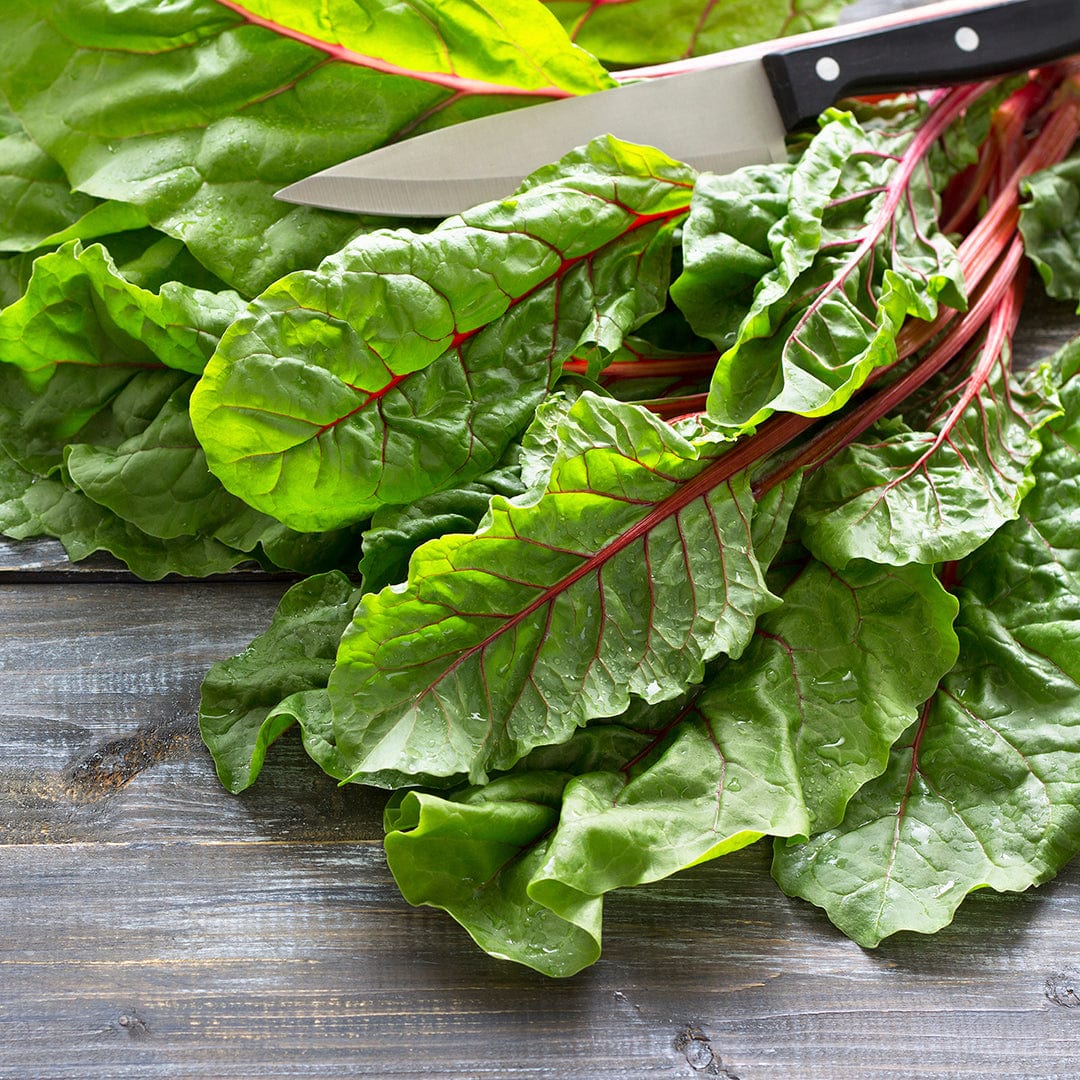
Use Code "EarlySeason50" for Limited Time Bulk Soil Savings!

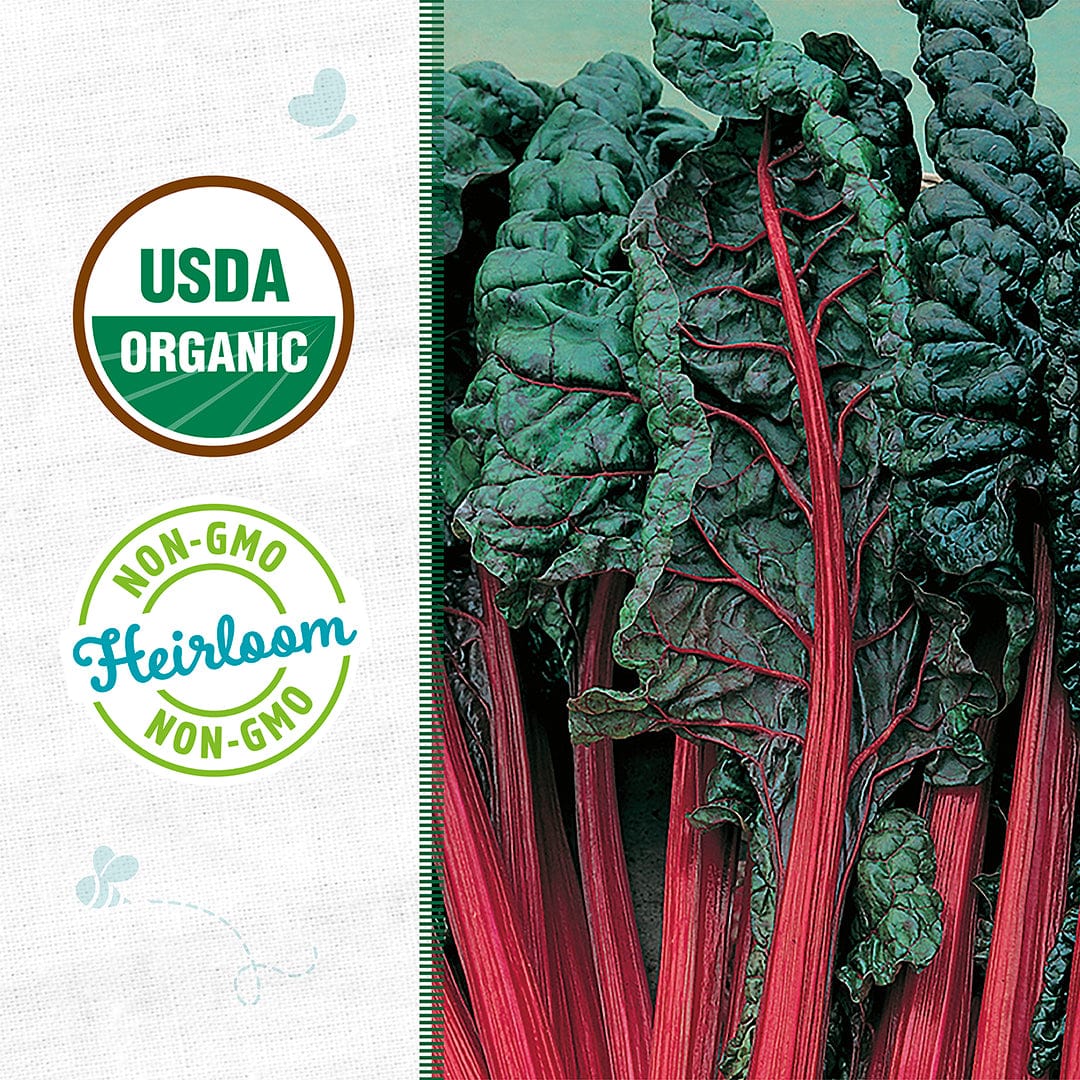

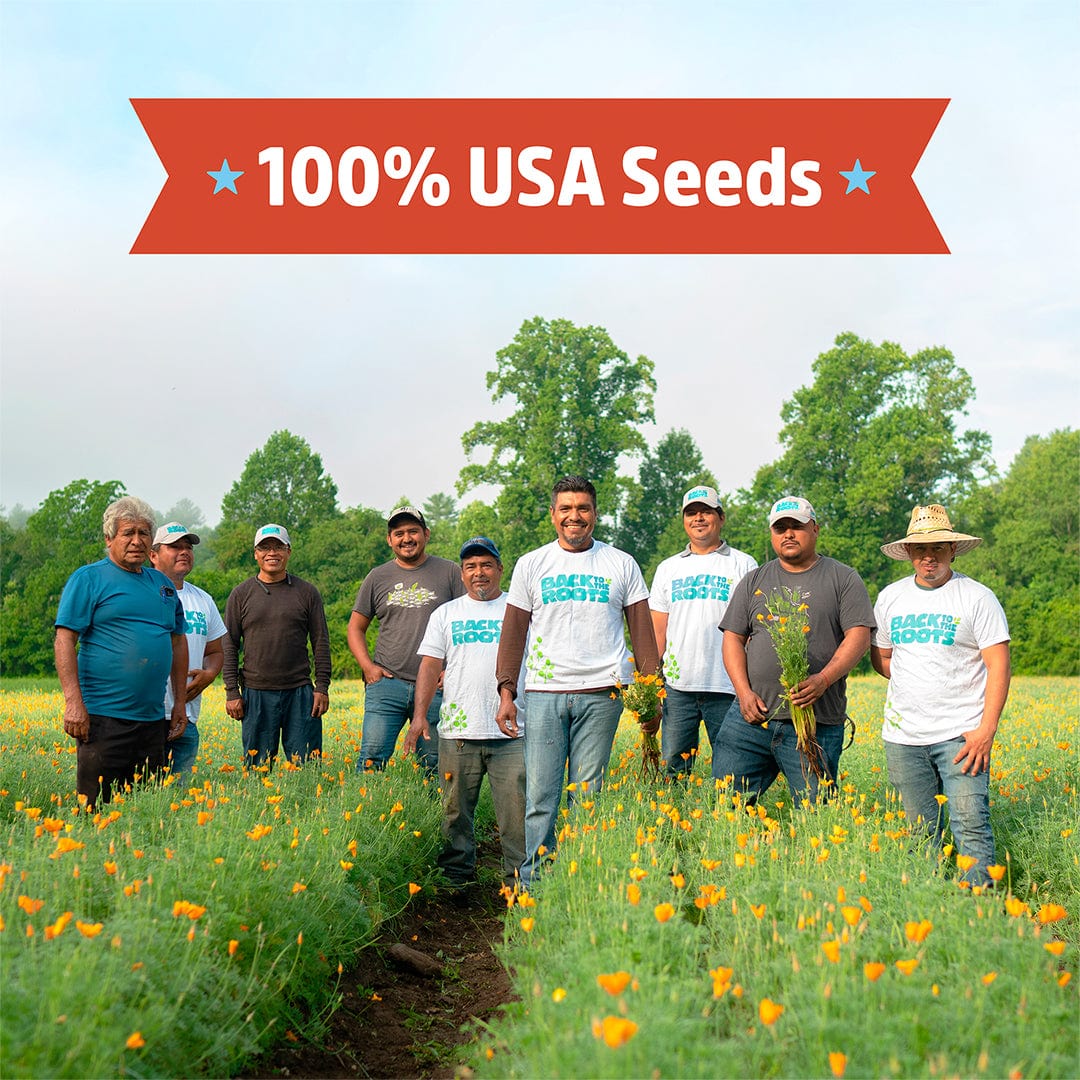
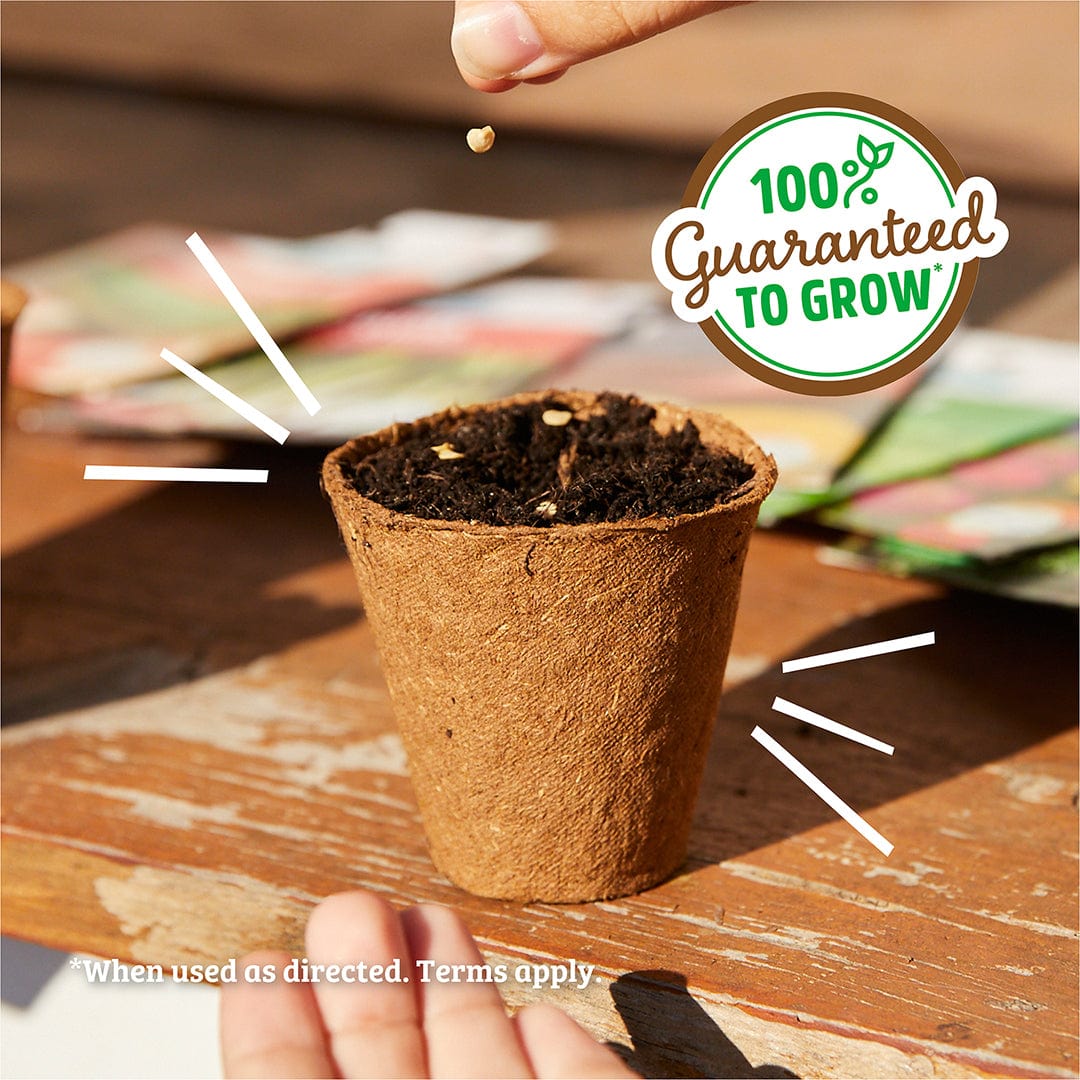
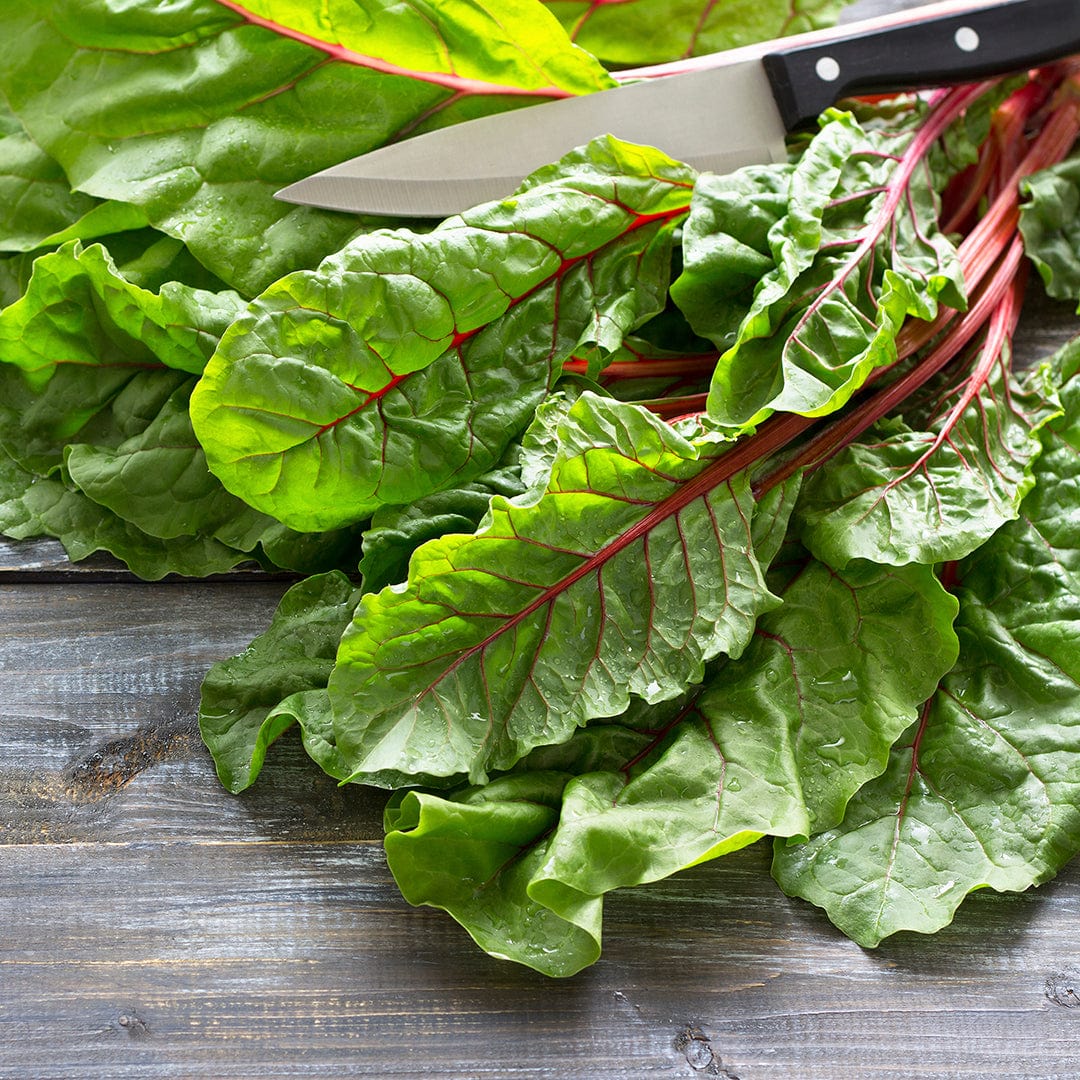
Easy to grow and adaptable to summer heat as well as colder fall conditions, swiss chard can be harvested continuously throughout the season for salads, and steamed or sautéed greens. Swiss chard has generous amounts of A, C, E, and B6, and a broad range of minerals, including calcium, zinc, and iron.
For soil, use a fertile well-draining potting mix that’s tailored for vegetables. Cool and mild weather is preferred, though chard has some heat tolerance. Seedlings will tolerate light frosts, and mature plants are hardy to moderate frosts. For the best quality leaves, provide full sun (6 or more hours of direct sunlight).
Swiss chard can be planted directly in the garden, or it can be started indoors and later transplanted. Use our grow calendar tool to find specific planting dates for your region! Seeds germinate in 7-14 days.
For planting outdoors, plant seeds in rows approximately 6 seeds per foot, thinning to 4-6" apart for full size plants. For transplanting, plant seeds indoors in containers ~5-6 weeks before transplanting after heavy frosts become infrequent. Transplant 4-6" apart in rows 12–18" apart.
For baby leaf growth, plant about 40 seeds per foot in dense 2-4" bands. Do not thin.
When plants are 6-8” tall, you can begin harvesting. Use the “cut-and-come-again” harvesting technique, taking the largest, oldest leaves and leaving the young ones to continue growing.
You can cut the ribs off the chard leaves and cook them like asparagus. The rest of the leaves are eaten as greens. You can cook them like spinach or eat them raw.
For baby leaves, clip young plants just above the soil. Multiple harvests are possible because the plants will grow new stems and leaves.

Organic Swiss Chard Seeds — 'Ruby Red'
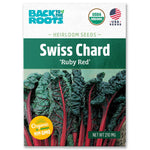






Be the first to know about new collections and exclusive offers.